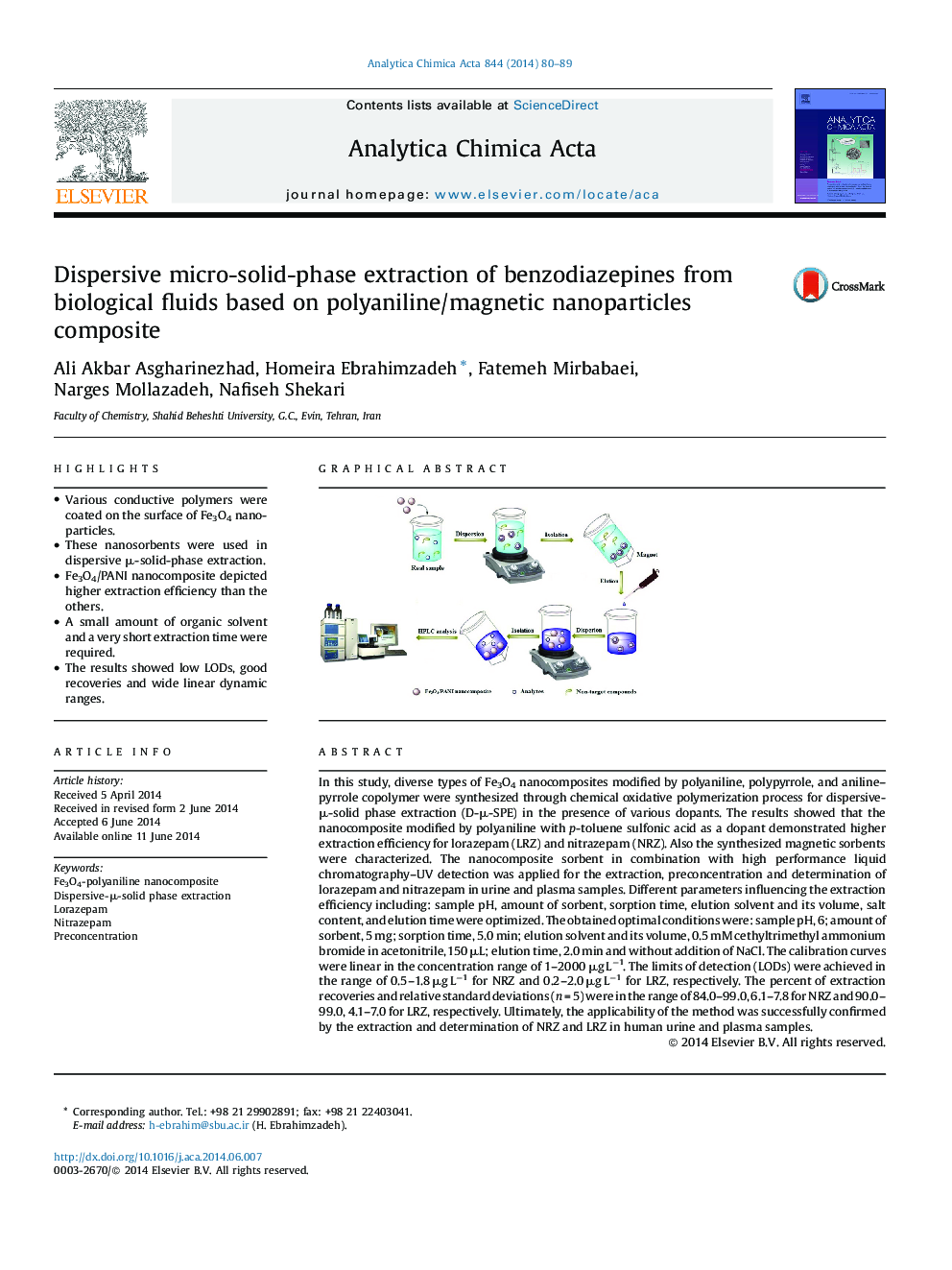| Article ID | Journal | Published Year | Pages | File Type |
|---|---|---|---|---|
| 1164325 | Analytica Chimica Acta | 2014 | 10 Pages |
•Various conductive polymers were coated on the surface of Fe3O4 nanoparticles.•These nanosorbents were used in dispersive μ-solid-phase extraction.•Fe3O4/PANI nanocomposite depicted higher extraction efficiency than the others.•A small amount of organic solvent and a very short extraction time were required.•The results showed low LODs, good recoveries and wide linear dynamic ranges.
In this study, diverse types of Fe3O4 nanocomposites modified by polyaniline, polypyrrole, and aniline–pyrrole copolymer were synthesized through chemical oxidative polymerization process for dispersive-μ-solid phase extraction (D-μ-SPE) in the presence of various dopants. The results showed that the nanocomposite modified by polyaniline with p-toluene sulfonic acid as a dopant demonstrated higher extraction efficiency for lorazepam (LRZ) and nitrazepam (NRZ). Also the synthesized magnetic sorbents were characterized. The nanocomposite sorbent in combination with high performance liquid chromatography–UV detection was applied for the extraction, preconcentration and determination of lorazepam and nitrazepam in urine and plasma samples. Different parameters influencing the extraction efficiency including: sample pH, amount of sorbent, sorption time, elution solvent and its volume, salt content, and elution time were optimized. The obtained optimal conditions were: sample pH, 6; amount of sorbent, 5 mg; sorption time, 5.0 min; elution solvent and its volume, 0.5 mM cethyltrimethyl ammonium bromide in acetonitrile, 150 μL; elution time, 2.0 min and without addition of NaCl. The calibration curves were linear in the concentration range of 1–2000 μg L−1. The limits of detection (LODs) were achieved in the range of 0.5–1.8 μg L−1 for NRZ and 0.2–2.0 μg L−1 for LRZ, respectively. The percent of extraction recoveries and relative standard deviations (n = 5) were in the range of 84.0–99.0, 6.1–7.8 for NRZ and 90.0–99.0, 4.1–7.0 for LRZ, respectively. Ultimately, the applicability of the method was successfully confirmed by the extraction and determination of NRZ and LRZ in human urine and plasma samples.
Graphical abstractFigure optionsDownload full-size imageDownload as PowerPoint slide
